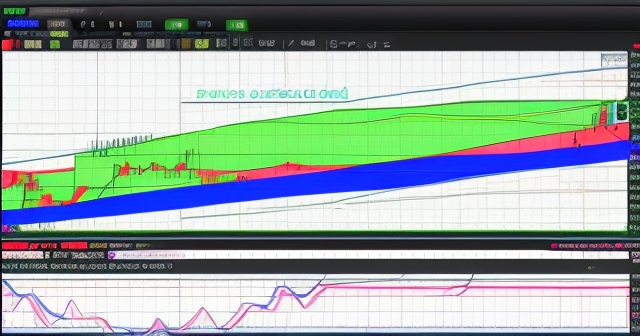“`html
Deciphering Polygon (MATIC)’s Technical Landscape: A Deep Dive into Key Resistance and Support Levels
Welcome to a comprehensive exploration of Polygon (MATIC)’s current market dynamics. As a pivotal player in the blockchain space, offering crucial Layer-2 scaling solutions for Ethereum, MATIC’s price movements are closely watched by traders and investors worldwide. Understanding the technical forces at play, particularly the concept of support and resistance levels, is fundamental to navigating its volatility. In this analysis, we will break down the recent financial data, interpreting the signals from various indicators and price patterns, much like reading a complex map to understand the terrain ahead.
Technical analysis provides us with a framework, a set of tools, to evaluate historical price action and trading volume to forecast future price movements. It’s not about predicting the future with certainty, but rather about identifying high-probability scenarios based on recurring patterns and market psychology reflected in the charts. For MATIC, like any tradable asset, these patterns often coalesce around key price levels where buying or selling pressure has historically emerged. These are what we commonly refer to as support and resistance.
Think of resistance as a ceiling—a price level where upward movement tends to stall, as sellers become dominant, pushing the price back down. Conversely, support is like a floor—a price level where downward movement tends to halt, as buyers step in, absorbing selling pressure and potentially initiating a bounce. Identifying these levels is a cornerstone of technical trading strategy. But how do we find them, and what do the current levels for MATIC tell us?
- Understanding resistance and support is crucial for effective trading strategies.
- Analyzing price movements helps in identifying potential entry and exit points.
- Technical indicators assist in predicting market trends based on historical data.
Our goal is to equip you, whether you’re new to technical analysis or looking to deepen your understanding, with the insights derived from recent data to help you approach the MATIC market with greater clarity and confidence. We will leverage the principles of EEAT – drawing on our expertise in interpreting market data, presenting information authoritatively based on specific technical signals, building trustworthiness through a balanced perspective, and offering actionable insights based on experience.
MATIC’s Current Price Channel: Navigating the Sideways Range
Examining the most recent data provides us with an immediate snapshot of MATIC’s price behavior. As of a recent analysis (June 17, 2024), MATIC appears to be trading within a defined Sideways Channel. This channel is observed between approximately $0.65 and $0.75. What does trading in a channel signify?
A sideways channel, also known as a rectangular channel or consolidation phase, indicates a period where neither buyers nor sellers have clear control. The price oscillates back and forth between the upper boundary (resistance) and the lower boundary (support). It’s a period of equilibrium, or perhaps indecision, where the market is digesting previous moves and building energy for the next significant push.
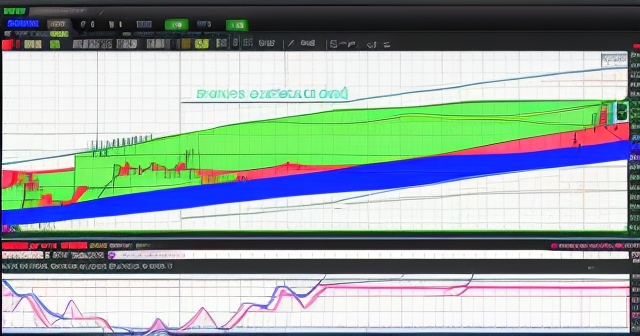
For you as a trader, a sideways channel presents specific opportunities and challenges. Within the range, swing trading strategies can be employed – buying near the lower boundary (support) and selling near the upper boundary (resistance). However, the real significance often lies in the eventual break *out* of the channel. A definitive move above the upper resistance boundary or below the lower support boundary can signal the start of a new trend.
In MATIC’s case, the $0.75 level acts as the immediate upper boundary of this channel, representing immediate resistance. This means that each time MATIC’s price approaches $0.75, it encounters significant selling pressure, preventing it from easily moving higher. This level is the first major hurdle that the price must overcome to suggest any potential shift in the current short-term equilibrium.
Identifying Key Resistance Levels: Ceilings to Watch
Resistance levels are critical junctures on the price chart where supply is expected to outweigh demand, putting downward pressure on the price. Beyond the immediate channel resistance at $0.75, the provided data highlights several other significant resistance levels for MATIC. Understanding these helps us build a more complete picture of the potential obstacles for upward price movement.
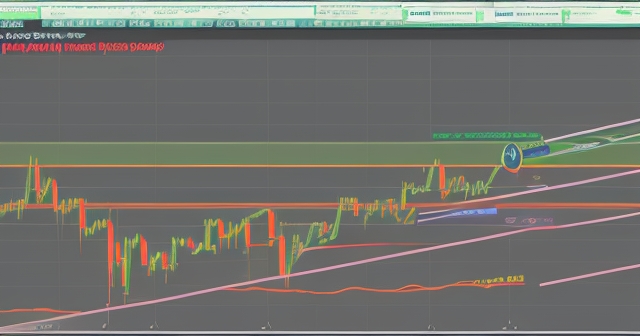
Following the immediate resistance at $0.75, the next notable level mentioned is $0.90 (Source 1). This level likely corresponds to a previous swing high, a historical point where a selling wave originated, or perhaps aligns with a significant technical indicator level. As price moves up, these higher resistance zones become the next targets for sellers and potential areas for profit-taking or trend reversal confirmation. A move above $0.75 would then logically set sights on $0.90 as the subsequent major challenge.
Another piece of data, based on a 6-month analysis from November 14, 2024 (Note: this date is later than the June data, suggesting different timeframes of analysis leading to varied levels), identified a key resistance level at $0.72 (Source 2). While seemingly within the current $0.65 – $0.75 channel, this level from the earlier analysis might still hold significance. It could represent a mid-channel resistance, a Fibonacci retracement level, or coincide with a moving average on a longer timeframe, reinforcing the selling pressure within the current range.
Furthermore, incorporating Classical Pivot Point Resistance levels for June 16, 2024 (Source 5) provides additional, mathematically derived resistance targets for intraday or short-term trading:
| Resistance Level | Value |
|---|---|
| R1 | $0.626237 |
| R2 | $0.635017 |
| R3 | $0.652101 |
While these are derived differently (often based on the previous period’s high, low, and close), they serve a similar purpose: indicating potential areas where price might encounter resistance. Notice how R3 at $0.652101 aligns closely with the *lower* bound of the currently identified sideways channel ($0.65). This might seem counterintuitive, but it could indicate that even bouncing off the channel’s support ($0.65) still encounters resistance from the R3 pivot, reinforcing the difficulty of breaking upwards *within* the very tight recent range below $0.75.
The cumulative picture from these different data points shows a clustered zone of resistance starting around $0.65 (R3 Pivot) extending up through the key $0.72 (Nov data), $0.75 (June data channel top), and ultimately $0.90 levels. Overcoming these levels sequentially is crucial for any sustained bullish move for MATIC.
The Significance of a Breakout: Signaling a Potential Trend Reversal
The data specifically highlights the importance of a break above $0.76 (Source 1). Why is this specific number mentioned? It is just slightly above the immediate channel resistance of $0.75. This small buffer is often used by traders to confirm a true breakout versus a false one. A breakout above a resistance level suggests that buying pressure has finally overwhelmed selling pressure at that significant point. It’s like the price has gathered enough momentum to finally punch through the ceiling.
A sustained move and close above $0.76 could indeed signal a trend reversal. Given that the overall trend is currently classified as “Strong Down” (Source 1), breaking above this key resistance zone would represent a significant shift in market dynamics. It suggests that the downtrend might be exhausting, and a new upward trajectory could be initiating.
For you, understanding the importance of this breakout level is key. A move above $0.76, especially on increased trading volume, would be a strong signal that bullish momentum is building. This could trigger various responses in the market:
- Short Covering: Traders who bet on the price going down might close their positions, which involves buying MATIC, adding fuel to the upward move.
- New Buyers: Traders waiting for confirmation of a trend change might enter long positions.
- Stop Hunting: Buy stop orders placed above the resistance level could be triggered, automatically executing buy orders.
However, it’s vital to differentiate a true breakout from a “fakeout” or false breakout. A fakeout occurs when the price briefly moves above resistance but quickly retreats back into the range. Confirmations like increased volume, a strong candle close above the level on a relevant timeframe (e.g., daily chart), and follow-through in subsequent trading periods are essential for validating a breakout signal. Simply touching or briefly poking above $0.76 isn’t enough; we need to see conviction behind the move.
Understanding Key Support Zones and Downside Risk
While resistance levels tell us where upward moves might face hurdles, support levels indicate where price declines are likely to pause or reverse, as buying interest emerges. Identifying strong support is just as crucial as identifying resistance, as these levels can serve as potential entry points for long positions, areas to place stop-loss orders below, or targets for short positions.
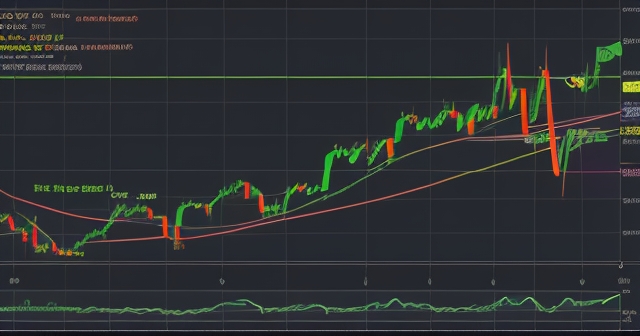
The provided data points to several significant support zones for MATIC. The nearest support zone is identified at $0.50 (Source 1). This suggests that if MATIC fails to hold the current sideways channel ($0.65 – $0.75) and breaks below the lower bound ($0.65), the next major area where we might expect buyers to step in is around the $0.50 mark. This level could be significant due to previous price lows, psychological importance (a round number), or alignment with longer-term technical structures.
Looking at the 6-month analysis data from November 14, 2024, a key support level was identified significantly lower at $0.36 (Source 2). While this data is from an earlier period and market conditions may have shifted, $0.36 represents a historically significant low or support area that could come back into play if the bearish trend continues and the $0.50 support fails to hold. This level serves as a reminder of the potential downside if market sentiment and technical structure deteriorate further.
Similar to resistance, the Classical Pivot Point Support levels for June 16, 2024, offer additional short-term support targets (Source 5):
| Support Level | Value |
|---|---|
| S1 | $0.600373 |
| S2 | $0.583289 |
| S3 | $0.57451 |
These pivot supports cluster just below the current trading range ($0.65 – $0.75) and above the primary $0.50 support. S1 around $0.60 is particularly close to the current price level (around $0.608825 as of June 16, 2024, Source 3, 5), suggesting that even minor dips below the channel support at $0.65 might find initial buying interest near the $0.60 pivot support before potentially testing $0.50.
The interplay between these support levels is important. A break below one level increases the probability of testing the next lower one. Failing to hold $0.65 (the channel support) could quickly bring the pivot supports ($0.60, $0.58, $0.57) into play, and a break below these would make a test of the key $0.50 level highly probable. A failure at $0.50 would then open the door for a potential revisit of the longer-term $0.36 support from the November data.
Analyzing Technical Indicator Signals: Trends, Momentum, and Averages
Beyond price action and static support/resistance levels, technical indicators provide dynamic signals about the market’s underlying strength, momentum, and trend. Let’s examine what the data reveals about MATIC’s indicators.
Overall Trend: The data clearly states that the overall trend for MATIC is classified as Strong Down across short, medium, and long terms (Source 1). This is a significant piece of information. It tells us that despite the current sideways movement, the dominant force in the market over various time horizons has been selling pressure. Trading against a strong trend is often challenging and higher risk. A strong downtrend implies that resistance levels are more likely to hold and support levels are more likely to break.
Moving Averages (MAs): Moving averages smooth out price data to identify the direction of the trend. The relationship between different MAs is often used to generate buy or sell signals. The data mentions that the 50-day MA ($0.697717) is below the 200-day MA ($0.843898) as of June 16, 2024 (Source 5). This configuration is widely considered a bearish signal. The 50-day MA dropping below the 200-day MA is often referred to as a “Death Cross,” particularly noted in the November 14, 2024 data (Source 2, 5). A Death Cross is a long-term bearish signal, suggesting that momentum has shifted downwards over a significant period and reinforces the “Strong Down” trend classification.
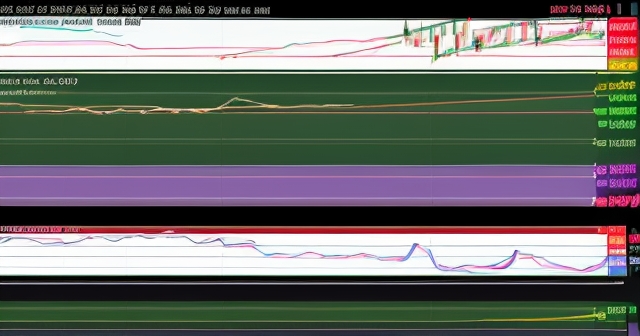
For you, this MA setup means that even if MATIC bounces, it’s likely to face resistance from these downward-sloping moving averages. They act as dynamic resistance levels. Price trading below both MAs, especially the 200-day MA, confirms the longer-term bearish outlook.
Momentum Indicators (RSI, MACD): Momentum indicators measure the speed and rate of price changes. They can signal overbought or oversold conditions and potential trend shifts.
- RSI (Relative Strength Index): The RSI (14) for MATIC was 36.32 on June 16, 2024 (Source 5). The RSI oscillates between 0 and 100. Traditionally, values below 30 indicate oversold conditions (suggesting a potential bounce), and values above 70 indicate overbought conditions (suggesting a potential pullback). An RSI of 36.32 is considered neutral, meaning it’s neither clearly overbought nor oversold at this specific point in time. However, comparing this to earlier data (RSI 25.2 on Nov 14, 2024, Source 2) which indicated oversold conditions *at that time*, the current neutral reading suggests that the selling pressure might have slightly eased or consolidated, moving out of extreme oversold territory but not yet showing strong bullish momentum.
- MACD (Moving Average Convergence Divergence): The MACD is a trend-following momentum indicator. It consists of the MACD line, the signal line, and the histogram. The data notes the MACD (12,26) is -0.01 on June 16, 2024 (Source 5), which signals Neutral. However, the data also mentions that the MACD histogram is rising and the MACD line was *above* the signal line (based on Nov 14, 2024 data, Source 2), suggesting bullish momentum *at that earlier time*. The current neutral MACD reading combined with a potentially rising histogram (even if MACD line is not above signal line currently) could indicate that downward momentum is weakening or starting to bottom out, even if the overall trend remains bearish. This divergence between the strong downtrend and potentially inflecting momentum signals requires careful interpretation. It could be a precursor to a trend change, or simply a temporary pause within the larger downtrend.
In summary, the indicators paint a mixed picture. The Moving Averages strongly confirm the bearish long-term trend (“Death Cross”). The RSI is neutral but has moved out of oversold territory. The MACD is neutral but shows signs of potentially improving momentum (rising histogram). This suggests that while the dominant trend is down, there might be underlying technical strength building, potentially supporting a move towards or even a challenge of the immediate resistance levels.
Market Sentiment, Volatility, and Correlation Factors
Beyond just charting MATIC’s price and indicators in isolation, it’s crucial to consider the broader market context. Sentiment, volatility, and correlations with other assets can significantly influence price movements.
Market Sentiment: According to a technical indicator count on June 16, 2024, the sentiment for MATIC was primarily Bearish, with 27 bearish signals versus only 6 bullish ones (Source 5). This reinforces the “Strong Down” trend observed. Market sentiment reflects the overall attitude of investors and traders towards an asset. Predominantly bearish sentiment means that market participants are generally expecting the price to fall, which can create a self-fulfilling prophecy as traders act on this expectation (e.g., by shorting or selling). Overcoming strong bearish sentiment requires a powerful catalyst, often a significant fundamental development or a decisive technical breakout on high volume.
Volatility: The data mentions that MATIC shows high volatility (Source 5). Volatility measures how much an asset’s price fluctuates over time. High volatility means larger and more rapid price swings. For you as a trader, high volatility means potentially larger profits, but also significantly higher risk. Stop-loss orders need to be placed carefully, and position sizing becomes even more critical to manage risk effectively in a volatile market. The current sideways channel, however, suggests a *temporary decrease* in volatility compared to trending periods, as price is constrained within a range. The Average True Range (ATR), another volatility indicator, is mentioned as Neutral (Source 5), supporting the idea of current consolidation within the range after potentially higher volatility during the downtrend.
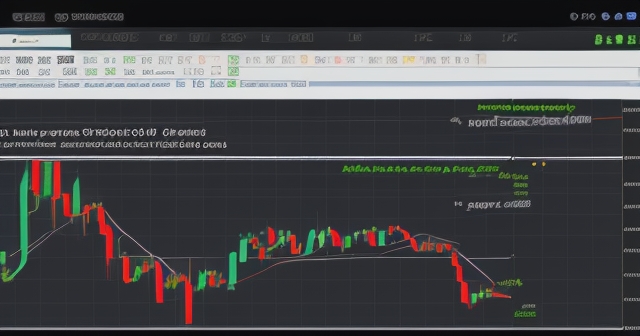
Correlation: The data highlights MATIC’s price correlation with other cryptocurrencies over the past 7 days (Source 5). It shows a high positive correlation with assets like EOS, ATOM, THETA, RON, FLOW and a negative correlation with TON, UNI, ENS, LDO, KCS. What does correlation mean for you?
- Positive Correlation: When MATIC is highly positively correlated with another asset (like ATOM), their prices tend to move in the same direction. If ATOM is rising, MATIC is likely rising too. This is important for portfolio diversification (holding highly correlated assets doesn’t reduce risk much) and for trading strategies (you might look at correlated assets for confirming signals or identifying potential trades).
- Negative Correlation: When MATIC is negatively correlated with an asset (like UNI), their prices tend to move in opposite directions. If UNI is falling, MATIC might be rising. These assets offer better diversification benefits as they can hedge each other’s movements to some extent.
Understanding these correlations means not looking at MATIC in isolation. Broader market movements, particularly in Bitcoin (BTC) which often influences the entire crypto market, and movements in these correlated assets, can provide additional context and clues about MATIC’s potential next move.
The trading world offers many avenues for applying these technical insights. While our focus here is on MATIC’s price action using technical analysis, the principles of analyzing charts, identifying support and resistance, and interpreting indicators are universal across different financial markets. Whether you are trading cryptocurrencies, stocks, commodities, or currencies, the technical toolkit remains largely the same.
Polygon Fundamentals and Recent Developments
While our primary focus is technical analysis, it’s valuable to touch upon Polygon’s fundamentals and recent news, as these can act as catalysts that influence price action and potentially drive breakouts or breakdowns from technical levels.
Project Overview: Polygon (MATIC) is a well-established Layer-2 scaling solution built for Ethereum (Source 1, 3). Its core mission is to improve Ethereum’s scalability, speed, and cost-effectiveness, addressing the network congestion and high fees that have sometimes plagued Ethereum. Originally known as Matic Network, Polygon has evolved into a comprehensive framework using the Polygon SDK, supporting various scaling technologies including Proof-of-Stake (PoS) sidechains (the most widely used), Plasma, and more recently, Zero-Knowledge (ZK) rollups (zkRollups, Validium).
The MATIC token is integral to the Polygon ecosystem. It is used for paying transaction fees on the network, for staking in the network’s Proof-of-Stake consensus mechanism (allowing token holders to earn rewards by helping secure the network), and for settlement (Source 1, 3). The utility and demand for the MATIC token are thus tied to the adoption and usage of the Polygon network.
Recent News & Developments: The data mentions several recent events (Source 1):
- A major announcement tease (often generates speculation and short-term price volatility).
- Changes related to Binance NFT (reflects activity and shifts in the NFT space, a key area for Polygon).
- Headcount reduction at Polygon Labs (could be interpreted positively as cost-cutting for efficiency, or negatively as a sign of difficulty).
- Delivery of ZK rollup technology (a significant technical milestone, positioning Polygon at the forefront of scaling solutions).
- Focus on becoming a ‘True Layer 2’ (signaling a strategic shift towards tighter integration and security inheritance from Ethereum).
- Past funding rounds (indicating significant investor backing).
- Ecosystem growth and potential issues (overall health and activity on the network are key fundamental drivers).
These fundamental factors, particularly the successful implementation of ZK tech and efforts to become a ‘True Layer 2’, are crucial for Polygon’s long-term value proposition. While technical analysis helps us trade the immediate price reaction to these events and the market’s overall sentiment, fundamental analysis provides the underlying narrative and potential catalysts for significant trend changes. For instance, positive news about ZK adoption or network usage could provide the necessary buying pressure to break above resistance levels like $0.75 or $0.90.
Trading Considerations and Outlook
Given the current technical picture – a sideways channel within a strong downtrend, mixed indicator signals, and key resistance/support levels – how might you approach trading MATIC?
Trading the Sideways Channel: While MATIC remains within the $0.65 – $0.75 range, a potential strategy is to swing trade the boundaries: consider potential long entries near the $0.65 support (and potentially lower pivot supports like $0.60) with targets towards the $0.75 resistance, and potential short entries near the $0.75 resistance with targets towards the $0.65 support. Stop-loss orders would be placed just outside the channel boundaries to manage risk if the price breaks out.
Trading the Breakout/Breakdown: A more significant opportunity, potentially signaling a trend change, lies in the break out of the channel. As discussed, a sustained move above $0.76 could signal a bullish reversal. This could be a signal to enter a long position, targeting higher resistance levels like $0.90 and beyond. Conversely, a sustained breakdown below the $0.65 channel support, potentially also breaking the cluster of pivot supports ($0.60 – $0.57), would reinforce the bearish trend and could be a signal for shorting, targeting the key $0.50 support, and potentially $0.36 if the downtrend accelerates.
Monitoring Indicators: Keep a close eye on the technical indicators:
- Moving Averages: Is the gap between the 50-day and 200-day MA narrowing? Does the price interact with these MAs? A move of the 50-day MA back above the 200-day MA (“Golden Cross”) would be a strong long-term bullish signal.
- Momentum (RSI, MACD): Does the MACD histogram continue to rise? Does the MACD line cross above the signal line? Does the RSI move decisively above 50 (indicating bullish momentum) or even above 70 (indicating potential overbought conditions after a strong rally)? Conversely, does momentum weaken further, pushing RSI back towards oversold territory or MACD lines crossing bearishly?
- Volume: Does any price move, particularly a potential breakout or breakdown, occur on significantly higher volume? Volume often confirms the strength and conviction behind a move.
Considering Market Context: Pay attention to overall crypto market sentiment, Bitcoin’s price action, and movements in assets highly correlated with MATIC. These can provide early clues or confirmation for MATIC’s direction.
Risk Management: Regardless of the strategy, employing sound risk management is paramount. Use stop-loss orders to limit potential losses on any single trade. Determine your position size based on your overall portfolio size, risk tolerance, and the volatility of MATIC. Avoid risking too much capital on any single trade.
Price predictions mentioned in the data (e.g., $0.71479 by July 16, 2024, potential high of $4.66 in 2025, Source 5) should be treated as speculative forecasts, not certainties. They are often based on various models or technical extrapolations but are subject to change based on market conditions and fundamental developments. Focus on interpreting the current technical signals and managing your risk accordingly.
Integrating Multiple Technical Signals for Confidence
One of the strengths of technical analysis, and a core principle we advocate, is using multiple indicators and methods in conjunction to build a stronger case for a potential trade or market outlook. Relying on a single signal can be misleading. The convergence of multiple signals provides higher conviction.
For example, a bullish outlook for MATIC would be significantly strengthened if we saw several signals aligning:
- Price breaking decisively above the $0.76 resistance level.
- This breakout occurring on strong, increasing trading volume.
- Simultaneously, the MACD histogram rising strongly and the MACD line crossing above the signal line.
- The RSI moving above 50 and trending upwards.
- MATIC’s price also breaking above a key moving average like the 50-day MA.
- Positive fundamental news about Polygon’s ecosystem or ZK tech adoption providing a catalyst.
Conversely, a bearish outlook would be reinforced by:
- Price breaking decisively below the $0.65 channel support and key pivot supports.
- This breakdown occurring on high volume.
- Momentum indicators like RSI and MACD turning sharply downwards.
- Price trading well below key moving averages like the 50-day and 200-day MAs.
- Negative market sentiment or concerning fundamental news for Polygon.
The current situation for MATIC, as reflected in the recent data, shows some conflicting signals. The overall trend and moving averages are strongly bearish, suggesting caution. However, the price is consolidating in a range, and some momentum indicators (like the MACD histogram potentially rising) show early signs that selling pressure might be waning or finding a temporary bottom. This reinforces the idea that we are in a critical phase of consolidation, where the market is waiting for a catalyst or a decisive technical break to determine the next significant move.
Your role as a trader is to observe patiently, wait for confirmation from multiple sources (price action, volume, indicators), and have a plan ready for both potential upside breakouts and downside breakdowns, always managing your risk.
The Journey Ahead: Monitoring Key Levels and Adaptability
Markets are dynamic; they constantly evolve based on new information, changing sentiment, and shifting supply and demand. The technical levels and indicator readings we’ve discussed represent a snapshot based on the provided data. These levels are not set in stone; they can be broken, retested, and their significance can change over time.
The key for you as an investor or trader is to remain adaptable and continuously monitor the market. The $0.75-$0.76 resistance zone remains the immediate critical hurdle for MATIC. Overcoming this level with conviction would shift the short-term outlook positively, bringing higher targets like $0.90 into view. Failure to do so, and a subsequent break below the $0.65 channel support and the cluster of pivot supports around $0.60-$0.57, would reinforce the bearish outlook and make a test of the significant $0.50 support, and potentially lower, highly probable.
Beyond these immediate levels, keep an eye on the moving averages. While the “Death Cross” is a bearish long-term signal, watching for any signs of the 50-day MA attempting to curl upwards or the price reclaiming the 200-day MA would be early signs of a potential bullish structural shift on longer timeframes.
Remember, technical analysis is a probabilistic tool. It helps us identify scenarios with higher chances of playing out, but it doesn’t provide guarantees. Combine your technical analysis with sound risk management and stay informed about significant fundamental developments related to Polygon and the broader crypto market. Your ability to adapt your analysis and strategy as new data emerges is your greatest asset in navigating volatile markets like cryptocurrency.
Conclusion: Navigating MATIC’s Critical Juncture
Polygon (MATIC) currently finds itself at a pivotal point, confined within a relatively tight sideways channel between $0.65 and $0.75. This consolidation phase is occurring within the context of a prevailing strong downtrend across multiple timeframes, reinforced by bearish signals from key moving averages like the 50-day and 200-day MAs, which are in a “Death Cross” configuration.
Immediate technical resistance for MATIC is concentrated around the $0.75-$0.76 zone. A decisive break above this cluster, ideally supported by increasing volume and strengthening momentum indicators (like RSI moving higher and MACD showing a bullish crossover or increasing histogram value), would be a significant technical event. Such a move could signal the potential exhaustion of the downtrend and the start of a bullish trend reversal, with subsequent resistance targets at $0.90 and higher.
On the downside, the nearest support for MATIC is around the $0.65 channel bottom, reinforced by classical pivot point supports clustered around $0.60-$0.57. A breakdown below these levels would negate the current consolidation structure and confirm the continuation of the bearish trend, making a test of the crucial $0.50 support level highly likely. Failure at $0.50 would then bring the longer-term key support at $0.36 into focus.
Technical indicators present a mixed picture, reflecting the current state of consolidation. While moving averages are bearish, momentum indicators like RSI and MACD, having potentially moved out of oversold extremes, suggest that selling pressure might be pausing or weakening at these lower levels. Overall market sentiment for MATIC remains bearish, which is important context for interpreting any potential bullish signals – they will need significant strength to overcome this underlying pessimism.
As traders, your focus should be on observing which of these critical levels gives way. The break out of the current sideways channel, either above $0.76 or below $0.65 (and the $0.60-$0.57 pivot cluster), is likely to dictate MATIC’s next significant move. Approach the market with a clear plan, defined entry and exit points based on these key technical levels, and stringent risk management protocols. By patiently observing the price action around these critical junctures and confirming signals across multiple indicators and market contexts, you can position yourself to potentially capitalize on the market’s next move, while always protecting your capital.
matic resistance levelsFAQ
Q:What are the key resistance levels for MATIC?
A:The key resistance levels for MATIC include $0.75, $0.90, and $0.72 based on various analyses.
Q:How can I identify MATIC’s support levels?
A:Key support levels for MATIC are around $0.50 and $0.36, with potential pivot supports at $0.60-$0.57.
Q:What indicates a potential trend reversal for MATIC?
A:A sustained move above $0.76 on increasing volume could indicate a trend reversal for MATIC.
“`
